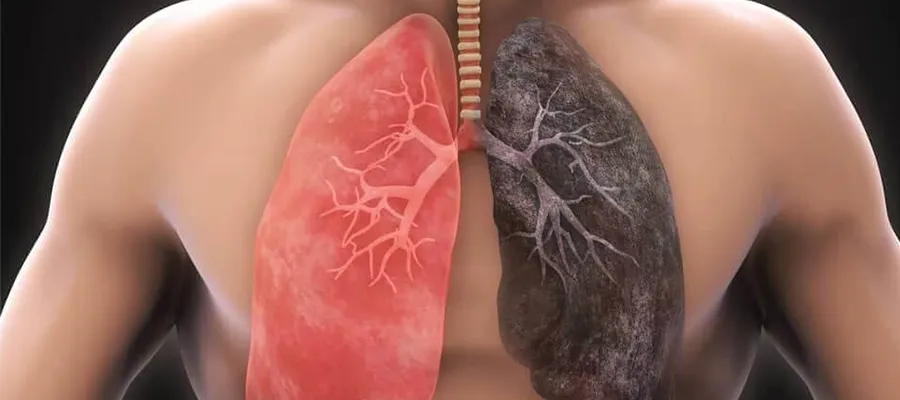What are the Most Dangerous Lung Diseases?
The lungs are one of the vital organs that enable our body to exchange oxygen. Our daily quality of life is directly related to our breathing capacity. However, lungs can be seriously damaged by various factors. So, what are the most dangerous lung diseases? This question is crucial for both healthcare professionals and individuals experiencing respiratory problems. Some lung diseases can progress and become life-threatening if not diagnosed early.
The severity of a disease is generally determined by its rate of progression, response to treatment, and degree of impact on vital organs. Some lung diseases are chronic, while others are acute. However, some diseases have high mortality rates and require challenging treatment.
Lung Cancer
Lung cancer is undoubtedly one of the most dangerous lung diseases. This disease begins with uncontrolled cell proliferation in the lung tissues and can spread to other organs over time. Smoking, genetic factors, and environmental pollutants, in particular, significantly increase the risk of developing lung cancer.
Lung cancer is often detected in advanced stages because early symptoms are often mild. By the time symptoms such as cough, weight loss, chest pain, and bloody sputum appear, the disease is usually advanced. This reduces the chance of a cure. Even if diagnosed early, treatment is challenging and multifaceted. A combination of surgery, chemotherapy, radiation therapy, and targeted therapies may be used.
COPD (Chronic Obstructive Pulmonary Disease)
COPD is a chronic disease caused by narrowing of the airways in the lungs and progresses over time. Smoking, air pollution, and occupational chemical exposure are the primary causes of COPD. This disease gradually reduces a person’s breathing capacity and leads to severe life-threatening limitations.
Patients with advanced COPD can become unable to perform even their daily activities. Symptoms include shortness of breath, persistent cough, phlegm, and fatigue. COPD cannot be cured, but its progression can be slowed. This can only be achieved through smoking cessation, medication, breathing exercises, and regular follow-up. COPD is one of the most dangerous lung diseases, progressing silently and becoming life-threatening over time.
Pulmonary Fibrosis
Pulmonary fibrosis is a disease characterized by the hardening and loss of elasticity of lung tissue. This makes it difficult for the lungs to expand and contract, impairing oxygen exchange. The disease is usually progressive and leads to irreversible lung damage.
Idiopathic pulmonary fibrosis, the most common form, is the cause of which is unknown. Symptoms include a dry cough, shortness of breath, and fatigue. As the disease progresses, there is no effective treatment other than lung transplantation. Therefore, pulmonary fibrosis is a serious lung disease that can have fatal consequences.
Tuberculosis (TB)
Tuberculosis is a contagious lung disease caused by the bacterium Mycobacterium tuberculosis. It is particularly severe in individuals with weakened immune systems. Although tuberculosis has caused fatal epidemics in the past, it continues to be a serious public health problem in some regions today.
The greatest danger of the disease is its ability to remain dormant in the body for long periods without causing symptoms. Symptoms such as cough, night sweats, weight loss, and fatigue appear in the later stages of the disease. Treatment is possible with early diagnosis and appropriate antibiotic therapy. However, left untreated, it can cause significant damage to lung tissue and can be fatal.
Pneumonia
Pneumonia is a disease caused by inflammation of lung tissue and can affect people of all ages. However, it can have more serious consequences, especially in the elderly, infants, and individuals with weakened immune systems. It can develop due to bacterial, viral, or fungal infections.
It presents with symptoms such as high fever, chills, productive cough, shortness of breath, and chest pain. If left untreated, complications such as respiratory failure, sepsis, and organ failure can develop. Pneumonia, especially in community-acquired forms, has a high mortality rate. Vaccination is possible, but not always effective.
Severe Forms of Asthma
Asthma is generally considered a manageable disease. However, in some cases, it can be much more severe. Patients with asthma who do not respond to medications and experience frequent attacks are particularly at high risk. During these attacks, airways become severely constricted, preventing oxygen intake.
Severe asthma attacks may require emergency intervention. Otherwise, they can progress to respiratory failure. These severe forms of asthma can have dangerous consequences if not properly managed.
Pulmonary Embolism
A pulmonary embolism occurs when a clot, usually in the legs, breaks off and travels to the lungs, blocking blood vessels there. This causes blood flow to a portion of the lung to be blocked. Symptoms include sudden onset of chest pain, shortness of breath, rapid heartbeat, and fainting.
Pulmonary embolism is a life-threatening condition that requires immediate intervention. The mortality rate is quite high, especially if treatment is delayed. Blood thinners and, in some cases, surgery may be necessary.
Cystic Fibrosis
Cystic fibrosis is a genetic disease usually diagnosed in childhood. It causes mucus in the body to become thicker and stickier than normal, leading to blockage of the airways and increased susceptibility to infection.
In later stages of the disease, lung function deteriorates significantly. Persistent infections, bronchitis, and pneumonia can shorten patients’ lives. Treatment is challenging and lengthy. Respiratory physiotherapy, antibiotics, enzyme supplements, and, in some cases, a lung transplant may be necessary.
COVID-19 and its long-term effects
The COVID-19 pandemic has once again highlighted the critical importance of lung health worldwide. In particularly severe cases, this virus can cause permanent lung tissue damage and, in addition to causing pneumonia, can also lead to acute respiratory distress syndrome (ARDS). This condition often requires intensive care and respiratory support.
Additionally, some patients experience symptoms such as respiratory problems, fatigue, and shortness of breath that persist long after recovery. Therefore, COVID-19 is a disease that can have long-lasting effects and poses a serious threat to lung health.
Contact us now for the prices of the most dangerous lung diseases.








